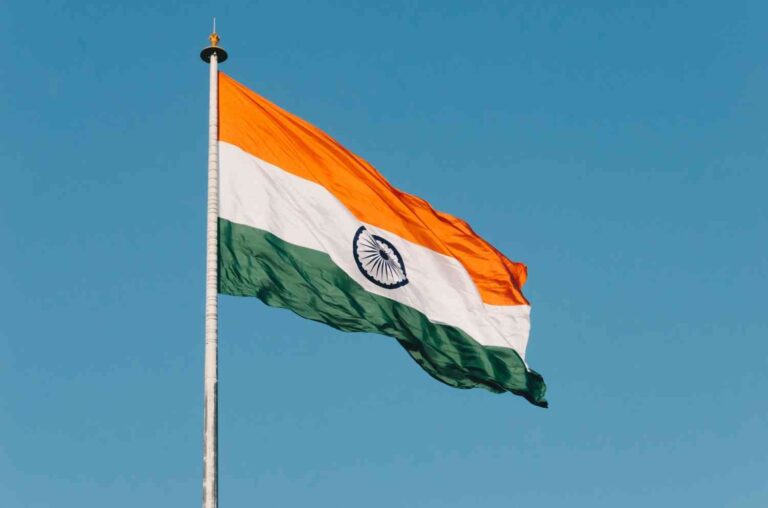The detailed state-wise statistics for the Indian population can be available with you in the year 2025. Find out the growth trends, density, and changes in demography for all the states and Union Territories.
Being the powerhouse of vast and varied population, India has always remained a topic of conversation in global demographic circles, mainly after it surpassed China to be the most populated country on this planet. The article discusses the upcoming figures on estimated India population 2025 with state-wise distributions, growth rates, and various ramifications of these demographics on other spheres such as economy, infrastructure, and environmental sustainability.
India Population 2025 Overview
Projected to be by 2025, India’s population will be 1.463 billion people. Growth rates are in decline but still notable compared to most other countries. Annual population growth occurs at the rate of 1.6in India. The population density in India is about an average of 492 people per square kilometer, explaining how large a population can be managed within a very restricted geographical area.
Factors Influencing Population Growth
Various factors combine to create a trend that bulwarks population growth in India:
- Fertility Rates: While the national Total Fertility Rate (TFR) is declining, some states still show higher rates than the replacement-level figure of 2.1, which clearly indicates this state is a sign toward population growth.
- Life Expectancy: In the recent past, life expectancy was enhanced by health care, thus indirectly contributing to population growth by reducing mortality.
- Migration: Both interstate migration from rural to urban areas and international migration are factors that tend to change the distribution of population statewise.
State-Wise Population Analysis
The variation in population in states of India in 2025 is detailed below:
| State/Union Territory | Estimated Population (2025) | Growth Rate (%) | Density (per sq km) |
|---|---|---|---|
| Andhra Pradesh | 54,250,000 | 0.81 | 308 |
| Arunachal Pradesh | 1,700,000 | 1.39 | 17 |
| Assam | 35,100,000 | 1.71 | 425 |
| Bihar | 128,000,000 | 2.31 | 1,106 |
| Chhattisgarh | 32,000,000 | 1.86 | 189 |
| Goa | 1,650,000 | 0.55 | 394 |
| Gujarat | 70,500,000 | 1.57 | 308 |
| Haryana | 30,000,000 | 1.76 | 573 |
| Himachal Pradesh | 7,500,000 | 1.22 | 123 |
| Jammu & Kashmir | 13,700,000 | 0.71 | 114 |
| Jharkhand | 38,000,000 | 1.98 | 414 |
| Karnataka | 68,000,000 | 1.11 | 319 |
| Kerala | 35,700,000 | 0.45 | 860 |
| Madhya Pradesh | 85,000,000 | 2.02 | 236 |
| Maharashtra | 123,700,000 | 1.41 | 365 |
| Manipur | 3,300,000 | 1.98 | 122 |
| Meghalaya | 3,700,000 | 2.46 | 132 |
| Mizoram | 1,200,000 | 1.79 | 52 |
| Nagaland | 2,200,000 | 0.60 | 119 |
| Odisha | 46,000,000 | 1.20 | 270 |
| Punjab | 30,500,000 | 1.19 | 551 |
| Rajasthan | 81,000,000 | 2.10 | 201 |
| Sikkim | 700,000 | 1.20 | 86 |
| Tamil Nadu | 77,000,000 | 0.72 | 555 |
| Telangana | 39,500,000 | 1.20 | 312 |
| Tripura | 4,200,000 | 1.34 | 350 |
| Uttar Pradesh | 238,900,000 | 2.00 | 829 |
| Uttarakhand | 12,500,000 | 1.83 | 189 |
| West Bengal | 99,200,000 | 1.04 | 1,028 |
| Delhi | 21,000,000 | 2.27 | 11,297 |
| Andaman & Nicobar Islands | 400,000 | 0.70 | 46 |
| Chandigarh | 1,200,000 | 1.80 | 9,258 |
| Dadra & Nagar Haveli and Daman & Diu | 700,000 | 7.27 | 1,198 |
| Ladakh | 350,000 | 1.50 | 4 |
| Lakshadweep | 70,000 | 0.50 | 2,149 |
| Puducherry | 1,500,000 | 2.50 | 2,598 |
The given figure highlights the demographic view of the situation in India in 2025, the variations with state and Union Territory regarding population size, growth, and density.
Notes on the Table:
- Delhi: It is called the National Capital Territory (NCT) of Delhi, having one of the highest population densities with a huge urban population.
- Ladakh: Another Union Territory in 2019, it becomes low on density due to its vast mountainous terrain.
- Rate of Growth: These rates, however, remain indicative and can change under various socio-economic and policy developments.
Demographic Trends
- By area and fertility, Uttar Pradesh leads in the most populous place.
- Socio-economic factors and cultural practices contribute to one of the highest growth rates in Bihar.
- Kerala and Tamilnadu tend to depict lower growth due to education, awareness, and socio-economic development that led to lower TFR.
- The North-Eastern states generally have a low population but show much variance in growth rates due to peculiar demographic patterns and migration.
Challenges and Opportunities
- Urbanization: The rapid growth of cities in states such as Maharashtra, Karnataka, and Tamil Nadu requires the development of infrastructure, which can create opportunities for improved economic activity and, at the same time, put more strain on their resources.
- Healthcare: The demographic base with a larger youth population promises a demographic dividend but necessitates investments in a solid system of health to nurture such growth.
- Environment: High population density strains the sustainability of the environment with respect to water, sanitation, and pollution.
- Economy: With many people of working age, there is great promise for economic growth, provided employment is generated. But it is coupled with the pressure on the system to find jobs for the millions annually entering the workforce.
- Education: Making investments in education will unlock the demographic dividend, but inequities across states must first be addressed.
Policy Implications
- Population Control Measures: Balancing necessary population control in regions experiencing high growth rates while providing for an aging population in other areas.
- Infrastructure Development: Specific approaches for urban and rural resorts, state-wise, depending on population dynamics.
- Education and Employment: Skill creation and employment programs which shall usher in the demographic dividend.
- Health and Outreach: Extension of health care in areas/agencies where population is high and density is growing to cope better with public health measures.
Conclusion
Population in India 2025 is both a challenge and an opportunity. Given the variations in population growth and density across states, specific policies suitable for each state have to be formulated to enhance human and economic growth along with environmental sustainability. India will have to steer its course toward demographic space that focuses on inclusive growth for all regions so that the demographic dividend eventually translates into a developmental dividend.
“While exhaustive, this analysis is conducted on projections that can change with variation in socio-economic conditions, shifts in policy, or the occurrence of unforeseen events globally. Yet, fundamental trends hold a guideline for the future demographic destiny of India.”




